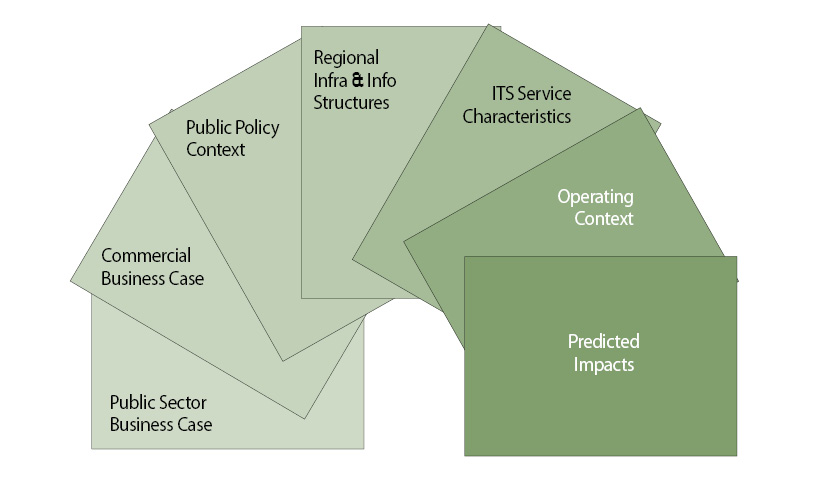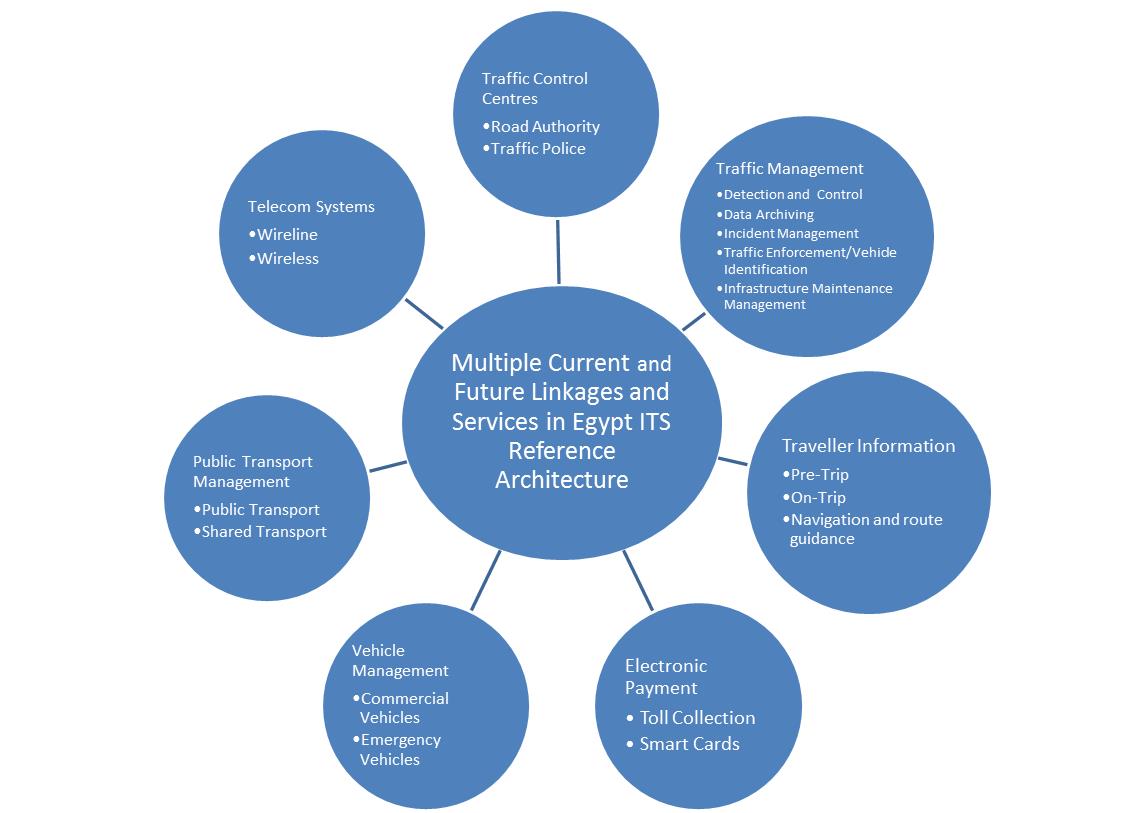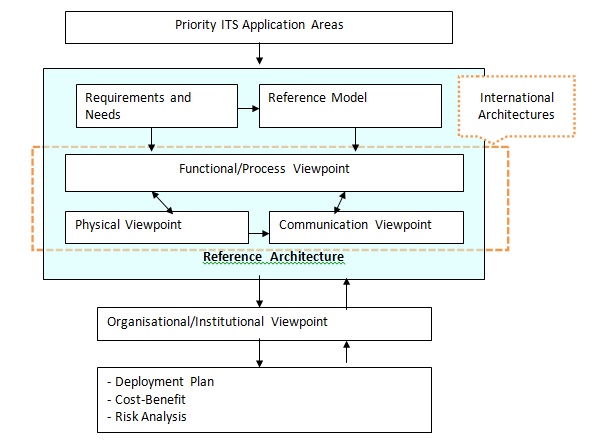

In most countries as traffic volumes increase and the roads get more congested there is pressure on the authorities for better traffic management and control of congestion. Highway authorities, road operators and urban road network managers everywhere need to deliver better road management. This involves all the activities involved in building, maintaining and making best use of the roadway assets.
One of the aims of road management is to ensure that traffic can continue to travel – in a manner that is safe, efficient, reliable and which causes the least damage to the environment. When designing a programme that supports this aim the road operator will need to address a number of practical considerations – such as how to:
These are universal issues for road network operations. They are about keeping traffic on the roads running safely and efficiently and taking into account the level of service experienced by the road users.
Typically, the programme will be built on a number of distinct principles that will shape the priorities:
ROLE OF ITS
ITS can make a positive contribution to these road management objectives. With relatively modest investment (compared with the cost of building a new road) ITS can significantly improve road network operations, optimise the use of available infrastructure, raise revenue and improve road safety. ITS can help to:
Road users want safe, reliable, and seamless journeys. They are not interested in the geographical boundaries between one transport authority’s network and another. This means that transport networks need to be integrated across geographical boundaries between different transport operators and administrations. ITS deployment may be multi-modal, multi-jurisdictional, and in some cases, international. This may involve bringing together local, regional, national road authorities and the operators (which may by concession-holders). (See Integrated Operations)
Most countries engaged in ITS deployment have formal ITS programmes at the governmental level – and/or the non-governmental level through anetwork of National ITS Associations. These programmes aim to promote ITS as a reliable and effective tool for solving transport problems – by ensuring consistency and synergy among ITS projects, continuity of funding, and generating public acceptance and new investment.
When formulating an ITS programme, priority services need be clearly identified in terms of overall relevance to goals and objectives, scope, requirements, and expected impacts. Priority services need to be “packaged” within clearly defined deployment projects that specify their scope, scale, functional and performance requirements and budget. (See PDF 9201 Hefei City Traffic Management System Case Study) Projects will need to show they meet the criteria for funding by national or international funding schemes. (See Budgeting and Affordability)
Keys to Success
The key to success can be summed up in four simple rules:
The figure below illustrates the different factors that need to be considered when planning a programme of ITS deployment.

Principal Dimensions of ITS Deployment
In the case of a public private partnership the commercial business case needs to be made. This will turn on rests on the return on investment and the profitability of the operation as a whole, including any monies received as a subsidy or through sponsorship. A return on capital and recovery of operating costs are both essential for any scheme to be commercially viable. A decision to progress the project will depend on a risk assessment of all uncertain factors including the availability of ITS infrastructure and the costs of creating and maintaining it. (ITS Technologies and Contracts) Other factors to take into account include:
Public authorities need to create a framework for the assessment of potential ITS application – from the point of view of the specific local deployment and from the perspective of the city or region as a whole. The public sector can also help create a positive business framework to stimulate the market – for example, by clarifying the institutional setup (organisational and regulatory issues). A practical example would be to facilitate data collection by commercial fleet owners and other operators – by authorising the use of privately funded and privately managed probe vehicles or other infrastructure, such as toll tags, to monitor conditions on the network. (See Probe Vehicle Monitoring)
The technical requirements include:
An ITS service which requires investment in a major infrastructure may fail because of the financial barriers and technical risks. If the operational cost and revenue model or longevity of the supporting services is uncertain then the venture may be judged too risky. As with any other business, the promoters will be looking for a clear path to successful and profitable delivery.
The viability of an ITS service deployment will be influenced by the level of functionality required, the service profiles – such as 24/7 (24 hour operations, seven days a week) – and the levels of service offered to the users (for example, 100% availability with real-time data). For example, for an ITS travel information service, there are many variables. (See Travel Information Systems) These include:
A number of issues need to be considered:
In Egypt, an activity was launched to engage the young technical community in understanding and developing smart solutions for traffic problems in Cairo. The initiative, “Cairo Transport App Challenge”, was supported by the World Bank and the Ministry of Communication and Information Technology, the Ministry of Transport and the Egyptian technical community. Young professionals were asked to develop, test and market smart phone applications to improve transport in Cairo – to make it less congested and safer for drivers, passengers and users of public transport. Technical and business mentorship was provided to the applicants. The challenge began with a workshop at Egypt’s Technology Innovation and Entrepreneurship Centre (TIEC) in September 2012 – and resulted in more than 24 submissions and more than 850,000 followers on social network sites. Experts and mentors shortlisted 10 finalists, with the “most popular” app being chosen through online voting.
The operating context is the basic organisational, regulatory and institutional framework for the ITS service and is the key to ensuring a viable and workable system. For example:
A well planned service operation needs sound allocation of risk, appropriate cost sharing, sustainable service pricing and a commitment to quality delivery for the end user. A service which is too costly for the user will have low market penetration which will limit the impact of the service with respect to policy and commercial goals and undermine the public and private sector business case for funding.
Public/private partnerships are often needed. These can range from informal agreements between the parties to cooperate on day-to-day operational tasks – to more formal contracts and/or memoranda of understanding on information sharing and provision of services. (See Public Private Partnerships)
Establishing a group of individuals with decision making powers, who can represent the key stakeholder organisations, provides a forum for reaching consensus on roles and responsibilities in terms of how to deliver and manage ITS-based operations.
In ITS Egypt, formal agreements are being developed between:
An ITS architecture provides an analysis of the technical and organisational requirements in support of a planned approach to ITS at the national or regional level for consistent deployment of ITS. System architecture provides a basis for learning about ITS and reaching consensus among stakeholders on the ITS development process. (See Basic Concepts and What is ITS Architecture)
One of the very first steps in the development of an ITS architecture is to involve all major stakeholders to understand, define and agree:
An advantage of developing an ITS architecture is to engage with users and stakeholders at the outset of developing an ITS investment programme. It provides a strong push for establishing the necessary institutional and organisational arrangements to deliver and support the services. In recent years, countries with rapidly developing economies – such as Chile, the Czech Republic, and Mexico – have developed national ITS architectures involving their respective stakeholders.
A top-level ITS architecture will act as a reference to guide the development of the detailed ITS design for the various services. For countries starting to develop a national or regional ITS programme of investment, a top-level architecture will clarify:
The ITS architecture will form a stable and open basis for the development of a design for the selected services to ensure compatibility, consistency and interoperability in ITS investment programmes. This has been the case in Hefei, China – and also in Egypt, where an architectural sketch for ITS planned services provided a starting point for developing the technical requirements needed for the delivery of ITS systems.
The figure below provides an overview for developing the national architecture proposed for ITS deployment in Egypt in the short and medium-term.

High Level Architectural Sketch for Egypt ITS Programme
International Architectures
In most cases, after agreement on the scope for ITS deployment (as shown in the architectural sketch above), a country will develop the ITS architecture by adapting a specific international architecture to fit their needs. There are two commonly used alternatives. (See Using the US Architecture and Using the FRAME Architecture)
In Malaysia, the national system architecture is largely based on an adapted form of US National ITS Architecture (See ITS Malaysia). In Egypt, the national ITS architecture is being developed on the basis of the ISO/TC204 reference architecture (See Object Oriented Architectures Why Create One) together with the European ITS Framework Architecture (FRAME). The figure below [provides an overview of the system architecture framework for ITS in Egypt.

Outline of the Egypt ITS Reference Architecture
Many countries have already made substantial investments in ITS – typically an urban traffic signal control system. These are often now so-called “legacy systems” which have to be integrated into the national architectures to secure a level of interoperability. In some cases, this is not possible where the system uses its own developed (proprietary) standards rather than open standards. It is possible that a lack of interoperability will make it necessary to phase out the legacy systems. The acquisition of new systems should proceed on the basis of open and international standards.
Development and Maintenance
Low to middle income countries are likely to find it difficult, too time consuming and expensive to commission an ITS architecture that covers all priority services at once. The World Bank’s Technical Notes recommend the creation of a “step-by-step” approach to ITS deployment in emerging economies. This means that the ITS architecture can be developed incrementally as new requirements become a priority and new technical solutions are available. In this way the architecture becomes the means mechanism for shaping the future of ITS. As deployment proceeds, development of the ITS architecture lays the groundwork for well-controlled, compatible, expandable, and interoperable ITS services.
ITS architecture should be a living document requiring continuous monitoring and adaptation as user needs, services and functional requirements evolve – and system requirements expand and technology upgrades become available.
In some cases, national ITS associations have taken on the role of developing and maintaining the national ITS architecture. For example, ITS Malaysia is in charge of maintaining the ITS architecture.
International Standards
The ITS architecture shows clearly the key processes which require a standardised interface – in particular for communication, data, and data exchange. Selection and adoption of appropriate international standards is essential to ensure harmonised deployment of ITS services at local, regional and national levels. In many emerging economies, multiple vendors compete for market access to supply ITS and often try to impose their own (de-facto or proprietary) standards. (See About Standards)
Timely sharing of traffic and transport information through electronic systems is a cornerstone of ITS network management projects and integrated network operations. It requires sufficient investment in traffic monitoring and surveillance technologies by the agencies responsible for road network operations. It also requires agreement on a set of common standards for data exchange: message sets, protocols, location referencing. Software models and telecommunications protocols are also crucial, but are driven by much larger markets than ITS – these non-transport-related developments need to be monitored and taken into account.
It is necessary to choose data communications standards and protocols that are common to all control centres, including the police and emergency services. This requirement will impact on any existing TCC operated by the police or municipal authorities – possibly involving an upgrade of legacy systems. An ITS Strategic Plan for the country or region will need to address these issues and make recommendations. (See Developing an ITS Strategy)
It is important to ensure the level of data availability and quality for the planned ITS services. Coverage and quality of data impact directly on the quality of ITS measures deployed.
In many cases, data can be shared by multiple ITS services. For example, traffic control measures – such as lane control systems – can be coupled with traffic enforcement systems that use the same traffic monitoring and camera installations. Similar options for integration are electronic fee collection, traffic flow monitoring and traffic information services.
There are national and international guidelines and standards on data coverage and data quality and how the data is coded – including:
In many countries, budget limitations prevent comprehensive investment in the infrastructure and organisational arrangements needed to achieve adequate data coverage and quality. Decision makers need to understand that ITS services will underperform if data quality and coverage is poor.
Transport network databases need constant maintenance to keep up-to-date. Careful checking is essential to avoid errors which can lead to features being incorrectly located.
New data sources do not negate the necessity of having permanent network monitoring infrastructure in place, to provide timely and accurate information about traffic flow and conditions on critical parts of the road network. Project planners will need to consider the extent of network coverage and the level of resolution required – in terms of road links and nodes to be monitored and the degree of resolution for specific time-periods.
Priority should be given to road sections with high traffic flows and high occurrence of incidents. Traffic monitoring and transmission of data in real-time will make it easier to respond rapidly to accidents and emergencies. For road safety or other operational reasons, it could be a priority to equip known hot-spots – in advance of comprehensive network-wide coverage.
Any traffic monitoring system will need operational support – in the form of a contractor to supply and maintain the equipment, software and provide the data integration services that will provide network monitoring “intelligence”.
Fixed detection
Traditionally traffic surveillance is provided by a network of fixed traffic detection systems (loops, radar, cameras and other above-ground detection). Equipment reliability and the requirement for maintenance over time are key considerations in making choices. A regional maintenance contract will be necessary to cover the fixed installations.
Point-to-point journey time data for the network (historic and in real-time) is a useful resource for journey planning and logistics support. Continuous non-invasive point-to-point tracking of individual vehicles is now possible at very low cost. Some road authorities use aggregated data (made anonymous) displayed on VMS to provide drivers with an expected journey time between key points on the network.
Vehicle tracking and data capture techniques include ANPR license plate recognition cameras or – more recently, point-to-point monitoring of Bluetooth signatures. Bluetooth sensors have been used successfully for point-to-point average speed monitoring as a cheaper alternative to Automatic Licence-Plate Recognition. (See Vehicles and Roadways)
Floating Car Data
An increasingly attractive option for large scale data collection at relatively low cost is the use of Floating Car Data (FCD). The widespread availability of smart-phones that incorporate GPS has made it easy to obtain data on vehicle paths, speeds and journey times. A fleet of vehicles equipped with a location system, like GPS, can act as “traffic probes” that provide a rich source of data for monitoring network conditions in real-time and for keeping track of network performance. Data on point-to-point route choice and journey times (made anonymous to protect privacy) will contribute to network planning, incident response, traffic management and control.
Crowd Sourcing
Social networks and “Crowd sourcing” can also be used to gather information on network conditions using smart-phone applications. Crowd sourcing of traffic data is still in its infancy but represents an important opportunity where there is no investment in fixed detection. A road operator could explore cooperation with developers of smartphone applications to produce a valuable service to road users in the region.
China
In the city of Hefei, China, a total of more than 3,000 public vehicles were equipped with GPS and GSM mobile telecommunications to continuously provide on-line traffic data to the control centre. The data were then merged with camera and loop data to enable good coverage of the urban road network.
South Africa
In South Africa, a national ITS network monitoring and management scheme was developed by the South African National Road Agency (SANRAL). This scheme covers over 560 km of national road networks in the three regions of Gauteng, Kwazulu-Natal and the Western Cape. Under a BBFO contract (Design, Build, Operate and Maintain), the project includes:
Philippines
In Cebu, in the Philippines, a pilot project is being developed in collaboration with the Metro Cebu Taxi Operator Association, using GPS-enabled mobile phones in a sample group of taxis – to support traffic data collection and dispatch. By tracking the vehicles’ travel speeds and locations, traffic status data is collected. The application benefits the participating taxi companies by incorporating a visual interface showing their vehicle locations – providing support for their taxi dispatch operations.
China
In Hefei China, a high penetration rate of more than 5,500 probe vehicles (police patrol cars, trucks and buses) are deployed in combination with loops, radar and cameras – to collect data. The objective is to develop and implement an up-to-date traffic management system – which integrates traffic data collection and the broadcasting of traffic information services to traffic operators, travellers and drivers. The Floating Car Data (FCD) System, enables the user to visualise the traffic flows and assess the traffic situation – and then broadcast traffic information to road users through Digital Multimedia Broadcasting (DMB). This uses TPEG (Transport Protocol Experts Group) – a coding standard for detailed traffic and journey information.
Egypt
Crowd sourcing is becoming an important data source for traveller information services – and is increasingly popular in Egypt as use of the internet and smart phones become more widespread. It provides a platform for informing the public about the status of traffic.
A contract for data collection operations can include performance-based requirements – where the contractor receives a payment incentive when the required level of service is achieved, or a financial penalty when it is not. Potential contractors are required to propose their own solutions and designs – and provide proof-of-concept to demonstrate compliance with requirements. This results-based approach depends on strict data quality benchmarks being defined in the contract – including data types, network and time period coverage, quality indicators (such as data accuracy, confidence, delay or latency of communication), availability, breadth and density of coverage.
Data and telecommunications are the backbone of ITS deployments – providing the basis for system integration and regional deployment. Communication technologies are becoming more sophisticated – with increased capability at lower cost. The trend is shifting away from fixed communications (phone lines, cables) to mobile (radios, Bluetooth, mobile phones, WiFi) and use of the Internet.
A well-defined communication architecture coupled with use of standards for data exchange and physical interfaces helps ensure a harmonised approach to ITS deployments at the road-side and control centres. The choice of communications for ITS deployments is constrained by the type and capacity of communications networks that are available. The basic considerations for comparing and choosing between those available will be:
Deployments must comply with any regulations imposed by the communication regulatory bodies and service companies.
There are two important levels of data communications to consider:
Area-level data communications are governed by the agreed data dictionaries and data exchange protocols – for example, the data communication protocols that link the road operators’ control centre with control centres operated by the police and emergency services. Road operators can share data through data exchange mechanisms as DATEX or have a common data base/data warehouse where all authorities can take out their data needs and inputs. An example is the Dubai Data Warehouse (Big Data) project in the Middle East.
Local-level data communications require the road operator to adopt communications standards and protocols for the control systems that are used across the network using open standards so far as possible – for example, data communications for traffic signals and VMS that are carried by the roadway telecommunications infrastructure
The use of high-volume communication links is limited by the lack of fibre-optic coverage and the type of the public switched telephone network. In many cases, a mixture of wireless, copper-wire and fibre-optics are used to transport data flows between the physical components of ITS at the road-side, traffic control centres, and in vehicles.
Some countries may have invested strongly in 3G/4G cellular communications networks and smart devices with low cost telecommunications. This provides a strong base for the development of services when basic data collection and traffic monitoring systems are not yet in place – equipped vehicles can provide data on speed, weather, incidents and journey times, all of which have value for journey planning and network monitoring.
If possible, the ITS deployment programme should not be locked into any single form of communication technology or equipment supplier. This is an area where ITS standards are critical. The choice of standards for data and communications protocols is important as an effective way of ensuring flexibility and independence of equipment supply. Poor choice of standards leading to lock-in removes the opportunity for market testing of equipment supply and economies through competitive tendering.
Use of existing infrastructure for general-purpose telecommunications reduces the time and cost to introduce ITS – and accelerates the benefits delivered to ITS users. At a later stage – with increased deployments – the use of dedicated telecommunication infrastructure can have advantages in terms of increased performance, reliability and flexibility in developing business models. (See Telecommunications)
In Egypt, the telecommunication regulatory authority in association with Egypt Telecom is actively involved in developing a communications architecture for ITS. For the deployment programme, level-of-service agreements cover the performance of the existing wired and wireless general-purpose communication networks (such as coverage, latency, packet loss and communications cost). These are to be included in an inter-agency agreement on the development of a proprietary fibre-optic cable network for the priority road corridors in the coming years.